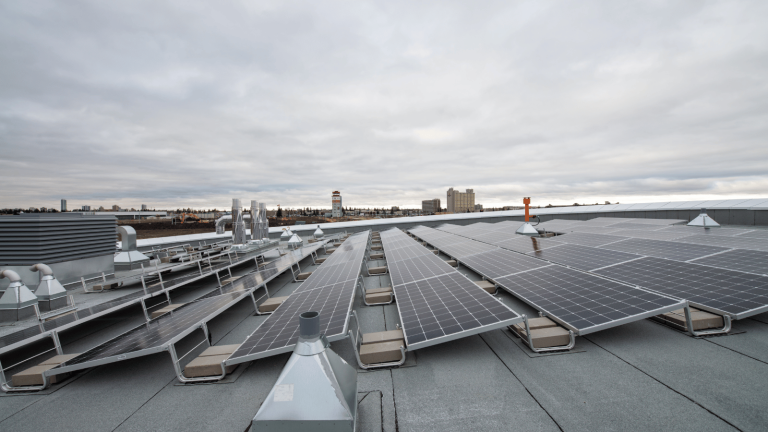When its city centre airport closed, the City of Edmonton sought to redevelop this 536-acre parcel as Blatchford: a sustainable, residential community that uses 100% renewable energy, is carbon neutral, and reduces its ecological footprint.
With the closure of its municipal airport, the City of Edmonton sought to develop the area as Blatchford, an environmentally-friendly community extending from its existing downtown core. Associated Engineering collaborated with the city to design Blatchford Neighbourhood’s District Energy Sharing System, powered by renewable energy for heating, cooling, and hot water – the largest system of its kind in Canada. The energy system integrates renewable energy sources, such as geoexchange, sewer heat exchange, and solar photovoltaics. Homes share energy, employing heat pumps to harness renewable sources and recover cooling energy. Blatchford’s visionary District Energy Sharing System reduces greenhouse gas emissions, enhances sustainability, and ensures the community’s energy resilience. Sustainable by design, Blatchford is a model for communities of the future.
The largest application of an ambienttemperature, energy distribution system in Canada, Blatchford’s innovative District Energy Sharing System allows for efficient use of heat pumps and integration of other low-temperature sources. Energy is shared between buildings rejecting heat and those requiring it. Communication was critical to successful project delivery and community acceptance. Supporting city communications helped to alleviate Council concerns and garner public buy-in. The design and scale of the project posed potential risks. Associated’s team analyzed design options, and identified and mitigated risks without impacting development timelines. Geoexchange test drilling and conductivity testing were completed to develop a site-specific, Please explain why you think this project should receive an award? 570 borehole field design. The geoexchange system involved design and construction of a large and complex piping system. The threekilometre distribution piping system (DPS) consists of two-pipe (supply/return) fusionwelded, high density polyethylene pipe, up to 600 millimeter in diameter. To facilitate construction, the DPS is largely collocated with other major utilities. Phase 1, including the 3 megawatt Energy Centre One plant, DPS, and GHX field, had to be commissioned before the homes could be occupied. The team employed a quality-based selection approach for the contractor and a construction strategy that resulted in the commissioning of the energy system on time.
Sorry, no records were found. Please adjust your search criteria and try again.
Sorry, unable to load the Maps API.
Associated Engineering
City of Edmonton


















